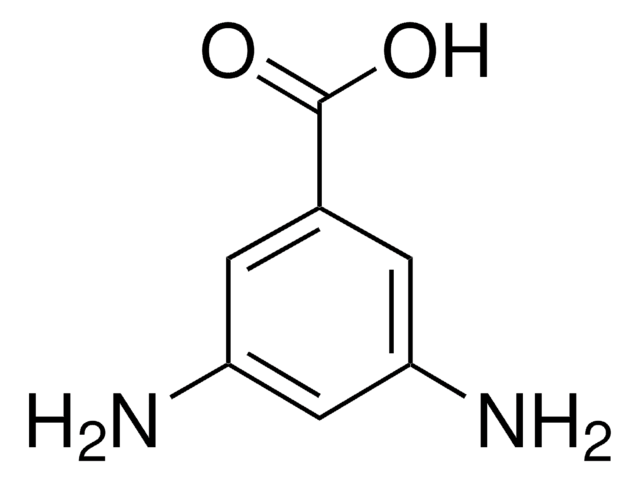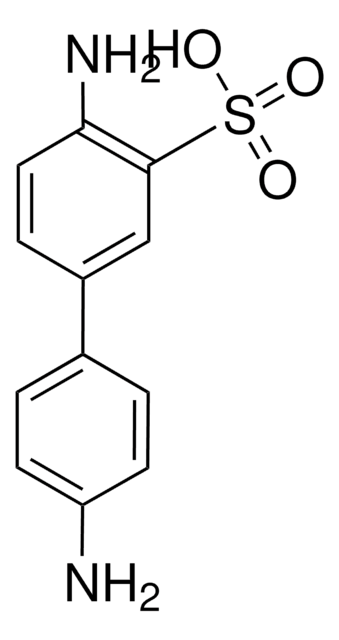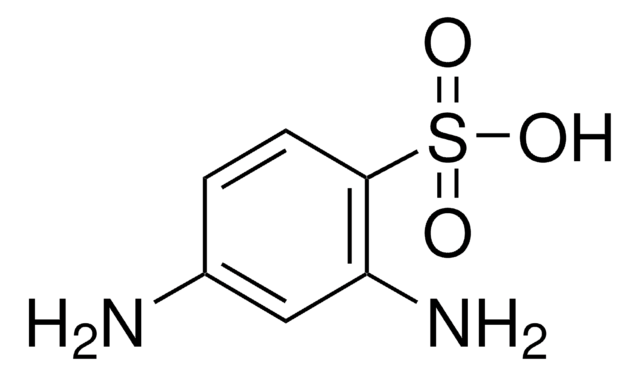32776
2,5-Diaminobenzenesulfonic acid
≥97.0% (T)
Sinónimos:
1,4-Diamino-2-benzenesulfonic acid, 1,4-Phenylenediamine-2-sulfonic acid, 1,4-Phenylenediamine-3-sulfonic acid, 2-Sulfo-1,4-phenylenediamine, p-Phenylenediamine-2-sulfonic acid
About This Item
Productos recomendados
assay
≥97.0% (T)
mp
298-300 °C (dec.) (lit.)
SMILES string
Nc1ccc(N)c(c1)S(O)(=O)=O
InChI
1S/C6H8N2O3S/c7-4-1-2-5(8)6(3-4)12(9,10)11/h1-3H,7-8H2,(H,9,10,11)
InChI key
HEAHMJLHQCESBZ-UHFFFAOYSA-N
¿Está buscando productos similares? Visita Guía de comparación de productos
Categorías relacionadas
General description
Application
signalword
Danger
hcodes
Hazard Classifications
Eye Dam. 1 - Skin Corr. 1B
Storage Class
8A - Combustible corrosive hazardous materials
wgk_germany
WGK 2
flash_point_f
Not applicable
flash_point_c
Not applicable
ppe
Eyeshields, Faceshields, Gloves, type P3 (EN 143) respirator cartridges
Certificados de análisis (COA)
Busque Certificados de análisis (COA) introduciendo el número de lote del producto. Los números de lote se encuentran en la etiqueta del producto después de las palabras «Lot» o «Batch»
¿Ya tiene este producto?
Encuentre la documentación para los productos que ha comprado recientemente en la Biblioteca de documentos.
Los clientes también vieron
Nuestro equipo de científicos tiene experiencia en todas las áreas de investigación: Ciencias de la vida, Ciencia de los materiales, Síntesis química, Cromatografía, Analítica y muchas otras.
Póngase en contacto con el Servicio técnico
![4,4'-diamino[1,1'-biphenyl]-2,2'-disulfonic acid AldrichCPR](/deepweb/assets/sigmaaldrich/product/structures/132/504/f9fd296f-c246-427d-9118-23f7b80e2be1/640/f9fd296f-c246-427d-9118-23f7b80e2be1.png)










